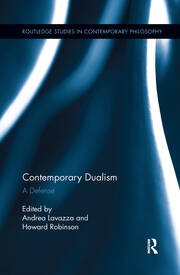Neuroscience Must Be Dualist, Whether or Not “Science” Allows It
A decade ago, philosopher Riccardo Manzotti and psychology prof Paulo Moderato, both of the University of Milan, published a widely noted chapter in Contemporary Dualism (Routledge 2013): ”Dualism in Disguise.” Briefly, they accuse neuroscientists of being dualists at heart. That is, the neuroscientists really do believe in the existence of the immaterial mind.

The point of view most neuroscientists say they believe is physicalism or eliminative materialism: That is, the mind is simply what the brain does, end stop. And in a nice way, Manzotti and Moderato (hereafter M & M) are accusing them of being hypocrites:
First, we want to highlight a surprising fact that is often denounced but seldom believed—namely that most of current neuroscientists, contrary to often-heralded physicalist credo, embrace dualism. Second, we want to introduce an original explanation of such a fact—an explanation that casts a disturbing light on many notions of current usage in the field of neuroscience. We will claim that the implicit assumptions adopted by most neuroscientists invariably lead to some sort of dualistic framework.
p. 81, Manzotti, R., & Moderato, P. (2013). Neuroscience Dualism in Disguise (open access) in Contemporary Dualism, (Routledge 2013)
How can neuroscientists mostly be dualists despite their recent attempt at enforcement of materialist orthodoxy against their panpsychist colleague Christof Koch? Well, his very existence draws attention to an uncomfortable fact: The dictum that the mind is simply the activity of various parts of the brain “has never been demonstrated empirically” (p. 83).
How closet dualism works
Most neuroscientists have faith that one day it will be demonstrated:
For many neuroscientists, the final surrender of the mind to neuroscience is neither a philosophical thesis nor an explicit empirical hypothesis. It is just what they take for granted. It is so obvious, that it appears superfluous to state it.
(p. 84) Manzotti, Moderato, 2023 Dualism in Disguise
There is a name for that: promissory materialism. Against such faith, the fact of continuing failure simply doesn’t register as a reason for doubt.
But then how can these emphatically materialist neuroscientists be closet dualists? M & M point to the high-table philosophical fuss known as the mind–body problem (“code-talk, information-talk, computation-talk, and model-talk”). It is, they say, an effort on the part of neuroscientists to disguise the fact that they have not explained away human consciousness— for which only a dualist perspective would even make sense: The fuss “ends up concocting a form of dualism in disguise. They have the logical form of dualism, but they don’t want to pay the ontological price for it” (p. 90):
Neuroscience faces an impossible mission—namely showing how a physical world which had been a priori defined devoid of those properties that are essential for the mind (unity, intentionality, quality, duration, and causation) may contain/produce those properties. This mission is taken to be somehow possible because inside the brain it is expected that something out of the ordinary may indeed happen. Yet, this would be mostly unexpected and indeed contrary to the starting premises.
(p. 88) Manzotti, Moderato, Dualism in Disguise
Why can’t the neuroscientists just accept reality and learn to work within a dualist framework? M & M offer that option in their conclusion: “In the end, there are two possible options—either neuroscience rejects internalism and considers an ontologically revised physicalism, or it accepts explicitly its persisting covert dualism and brings into the open its dualistic framework.” (p. 97).
The neuroscientists will, of course, do neither. Here’s their raw dilemma: Most people realize that the mind is real though it has no physical substance. But neuroscience cannot be considered a “science” on today’s terms unless it pretends either that the mind doesn’t exist or that it really is a material thing (we just haven’t discovered how yet). Neither option, clearly stated, makes much sense. So neuroscientists dance indefinitely around the mind–body problem, ensuring that the problem is never stated clearly enough to threaten their field as a “science.”
Enter the self-consuming snake…

The pressure is intensified by the fact that — as philosopher Edward Feser notes — all forms of materialism, however dressed up, boil down to eliminative materialism: The mind does not and cannot exist. It is merely an evolved illusion.
And, as Feser also says, “Eliminativism is a snake that eats its own tail”
Since science is as laden with intentionality as anything else, you will have to eliminate the very science in the name of which you are carrying out the elimination; and since philosophy (including eliminative materialist philosophy) is also as laden with intentionality as anything else, you will also have to eliminate eliminativism. Eliminativism is a snake that eats its own tail.
Edward Feser, “Mad dogs and eliminativists,”Edward Feser [blog], August 21, 2013.
No matter what terminology is chosen, the materialist project always and necessarily amounts to eliminating the mind. That, in itself is an acted-out confession that materialism is powerless to explain the mind. Neuroscientists are left with closet dualism, however much they don’t like it.
You may also wish to read: Leading consciousness theory slammed as “pseudoscience.” Huh? Integrated Information Theory’s panpsychist leanings are the 124 neuroscientist critics’ real target. Curiously, the coverage at Nature doesn’t address the critics’ concerns about IIT’s panpsychism. But it’s at Nature’s doorstep whether or not it’s noted.
